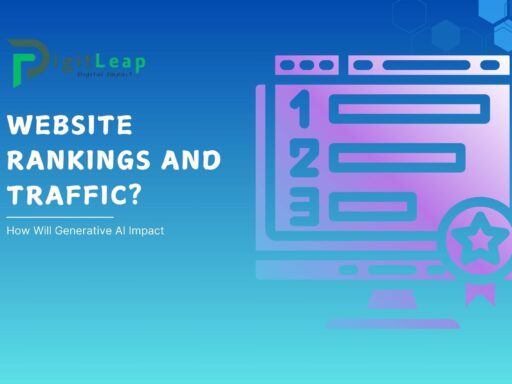How to Get More of What You Want in SEO
In the ever-evolving SEO landscape, achieving what you want—whether it’s more organic traffic, higher SERP rankings, better conversion rates, or brand visibility—requires both strategy and patience. SEO is a long game, and to consistently improve your outcomes, you need to optimize every aspect of your approach. This guide dives into actionable ways to help you get more from SEO by refining your processes, aligning your efforts with search engine algorithms, and maintaining a user-first mindset.
1. Set Clear SEO Goals Aligned with Business Objectives
Before diving into SEO tasks, define what success looks like for your business. Are you aiming for more leads, increased sales, or greater organic traffic?
- SMART goals (Specific, Measurable, Achievable, Relevant, and Time-bound) work best for SEO.
- Example: “Increase organic traffic by 20% within six months” is a goal you can plan and track.
When your SEO efforts are tied to business outcomes, you can prioritize tasks that truly matter, such as optimizing for local SEO to drive store visits or increasing product page visibility to boost sales.
2. Build a Strong Keyword Strategy with User Intent in Mind
Getting what you want in SEO starts with targeting the right keywords—those that align with your audience’s search intent.
- Transactional intent keywords (e.g., “buy sneakers online”) lead to conversions.
- Informational keywords (e.g., “how to maintain sneakers”) drive traffic and engagement.
Use tools like Google Keyword Planner, SEMrush, or Ahrefs to discover relevant keywords. Combine these insights with search intent analysis to ensure you’re meeting user expectations at each stage of their journey.
3. Optimize Your Content for Search Engines and Users
Creating content that both Google loves and users enjoy is a delicate balance. Ensure that your content delivers value and is optimized for search engines with the following steps:
- Use your primary keyword naturally in the title, headers, and meta description.
- Incorporate LSI keywords to enhance relevance.
- Write for readability—short sentences, bullet points, and headings make your content easy to digest.
Pro Tip: Keep your audience’s needs in focus. Answer their questions, address their concerns, and provide actionable solutions within your content.
4. Master Technical SEO to Improve Crawling and Indexing
To get more of what you want in SEO, technical optimization must be part of the strategy. Technical SEO ensures your site is accessible, fast, and easily indexable by search engines.
- Check for broken links and 404 errors using tools like Screaming Frog.
- Improve Core Web Vitals (LCP, FID, CLS) to enhance page speed and user experience.
- Create XML sitemaps and submit them to Google Search Console for efficient indexing.
When your site is technically sound, it makes ranking improvements easier and enhances your site’s visibility.
5. Build High-Quality Backlinks Strategically
Backlinks remain a major ranking factor. However, it’s no longer just about quantity—quality links from authoritative websites carry far more weight.
- Focus on earning backlinks through guest blogging, outreach, and digital PR campaigns.
- Analyze your competitors’ backlink profiles using Ahrefs or SEMrush to identify linking opportunities.
- Avoid spammy tactics like buying backlinks or participating in link farms—Google penalizes manipulative behavior.
Building a diverse and high-quality backlink profile helps improve your domain authority and rankings.
6. Prioritize User Experience (UX) to Boost Rankings and Engagement
Google places a premium on user experience—it’s not just about bringing users to your site but keeping them engaged.
- Ensure mobile-friendliness through responsive design.
- Improve site speed by optimizing images, enabling caching, and using a content delivery network (CDN).
- Focus on ease of navigation with a clear menu and internal links that guide users through your site.
When users have a positive experience, they’re more likely to stay on your site longer, reducing bounce rates and signaling to Google that your content is valuable.
7. Use Data to Monitor Progress and Adjust Strategies
To get more of what you want, data-driven SEO is essential. Regularly monitor your site’s performance and adjust your strategy based on insights.
- Use Google Search Console to track impressions, clicks, and keyword performance.
- Analyze bounce rate, session duration, and conversion rates through Google Analytics.
- Run regular SEO audits to identify and resolve issues that might be affecting performance.
Data helps you identify what’s working and what needs improvement, ensuring that your strategy evolves to meet changing needs.
8. Leverage Local SEO to Drive Targeted Traffic
If you operate a local business, local SEO is a must for driving foot traffic and phone inquiries.
- Optimize your Google Business Profile by ensuring accurate business information and collecting customer reviews.
- Use local keywords (e.g., “best pizza in Chicago”) to rank for location-based searches.
- Build local citations by listing your business on directories like Yelp and TripAdvisor.
Local SEO ensures you show up in “near me” searches and map results, driving relevant local traffic.
9. Align SEO with CRO to Maximize Conversions
It’s not enough to rank well—you need to convert traffic into leads or customers. Align your Conversion Rate Optimization (CRO) efforts with SEO to ensure the traffic you attract takes meaningful action.
- Use strong CTAs (Calls-to-Action) that align with the search intent.
- Conduct A/B testing on landing pages to determine which designs convert better.
- Optimize product pages with trust signals like reviews, badges, and easy checkout options.
SEO brings people to your site, but CRO ensures they stay and convert.
10. Stay Updated with SEO Trends and Algorithm Changes
SEO is constantly evolving. Google regularly updates its algorithms, and staying ahead of these changes is essential.
- Follow trusted SEO blogs like Search Engine Journal and Moz to stay informed.
- Experiment with new trends such as voice search optimization or AI-powered SEO tools.
- Attend SEO webinars and conferences to gain new insights and network with experts.
Keeping up with industry trends helps you adapt your strategy proactively and stay ahead of your competition.
11. Automate SEO Tasks to Save Time and Increase Efficiency
SEO can be time-consuming, but automation tools can help streamline repetitive tasks.
- Use rank tracking tools to monitor keyword performance automatically.
- Automate report generation for clients with platforms like Google Data Studio.
- Schedule content updates or social media posts using tools like Buffer or Hootsuite.
Automation frees up your time, allowing you to focus on strategy and creativity.
12. Experiment, Test, and Learn Continuously
SEO isn’t static—it requires ongoing experimentation. Test new keywords, tweak meta descriptions, experiment with content formats, and monitor the impact.
- Run A/B tests for meta titles and descriptions to improve click-through rates (CTR).
- Test internal link structures to guide users more effectively through your site.
- Learn from each experiment and apply the insights to future strategies.
Continuous learning ensures you’re always improving and staying competitive.
Conclusion
Getting more of what you want in SEO requires a combination of strategic planning, optimization, and persistence. By setting clear goals, leveraging data, optimizing user experience, and staying ahead of trends, you’ll be well-positioned to achieve higher rankings, better traffic, and increased conversions.
Remember, SEO is not a one-time task—it’s a continuous process of monitoring, testing, and refining your strategy. With the right approach, you’ll unlock more opportunities and reach your SEO goals faster than ever.






